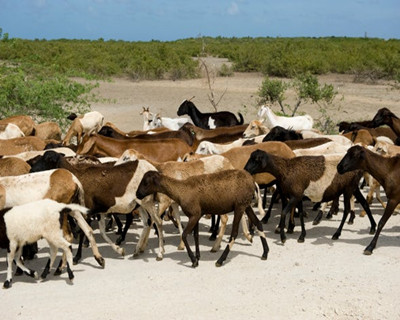(单词翻译:单击)
听力文本
This is Scientific American's 60-second Science, I'm Bob Hirshon.
A 10,000-year-old archaeological site in central Turkey is helping scientists unlock the region's pee-historic past. That's right: the salty residue of ancient urine can reveal how and when humans went from hunter-gatherers to herder-farmers who kept and raised animals in their settlements.
"And so we thought, okay, what's a process that an animal would go through if it was being kept at the site, whether it's corralled between buildings or kept in other specific areas?"
Archaeologist Jordan Abell from Columbia's Lamont-Doherty Earth Observatory. He's been studying the settlement of Aşıklı Höyük, located on a 16-meter-high mound near Turkey's Melendiz River.
"We thought, okay, well, these animals would be urinating all the time that they were on the mound."
In the dry climate of central Turkey, the sodium, chloride and nitrates from all that animal excretion would be trapped in the layers of earth onto which they were originally peed. Excavating those salts, layer by layer, should provide a timeline of animal populations at the site.
"And so we calculated, using a simple mass-balance approach, an estimate of the number of organisms that it would take to produce these large quantities of salt."
Abell and his colleagues found that from 10,000 years ago to about 9,700 years ago, the site jumped from having just a few large organisms' worth of whiz to more than 1,800.

Of course, people pee too, so the researchers had to figure out which salts were from humans and which were from their animals. Luckily, the location of the salts provided clues—for example, high concentrations in narrow alleyways too small for animals.
"The general thought is that they might have been standing on their roofs and just peeing into these alleyways."
Something that goats and sheep do rarely, if ever. By subtracting contributions from humans, the researchers calculated that there had to be between 800 and 1,300 sheep and goats to account for the remaining pee. The study appears in the journal Science Advances.
If true, it means that animal domestication didn't originate solely in the Fertile Crescent of Mesopotamia, as many of us learned in history class.
"Our technique has been able to support that idea, that somewhere outside the Fertile Crescent, in this case in central Turkey, was developing this process at near the same time as has been shown elsewhere within the Fertile Crescent."
An important discovery, since the advent of herding and farming was a turning point for human civilization, leading to cities and modern society.
Abell points out that many archaeological sites have little in the way of physical evidence like bones and artifacts, but presumably all of them have pee. So his advice for other archaeologists who want to track animal and human populations? Look out for number one.
Thanks for listening for Scientific American — 60-Second Science. I'm Bob Hirshon.
参考译文
这里是科学美国人——60秒科学系列,我是鲍勃·赫尔尚。
土耳其中部地区一处有10000年历史的考古遗址,正在帮助科学家解开该地区的小便历史。没错:古代尿液中的盐分残留能揭示出人类如何以及何时从狩猎采集者转变为在定居地留住和饲养动物的放牧种植者。
“所以我们想,好吧,如果动物被保留在这个地点,无论是被圈在建筑物之间还是被放到其他特定地方,它们会经历什么过程?”
哥伦比亚大学拉蒙特-多尔蒂地球观测站的考古学家乔丹·艾贝尔说到。他一直在研究位于土耳其孟雷迪兹河附近16米高土堆上的 Aşıklı Höyük定居点。
“我们想,嗯,这些动物在土堆上生活时一直都会小便。”
在土耳其中部干燥的气候中,所有动物排泄物中的钠、氯和硝酸盐都会留在它们原来小便地点之上的土层上。一层一层地挖掘这些盐,应该可以提供该地点的动物种群时间表。
“因此,利用简单的质量平衡方法,我们推算出产生这些大量盐所需的生物体数量。”
艾贝尔和同事发现,从10,000年前到大约9700年前,这个地点的大型生物数量从仅有几只跃升至了1800多只。
当然,人类也会小便,因此研究人员必须弄清楚哪些盐来自人类,哪些盐来自动物。幸运的是,这些盐的位置提供了线索——比如,在对动物来说过于狭窄的小巷,盐浓度很高。
“普遍想法是,他们可能一直站在顶上,向着这些小巷小便。”
如果山羊和绵羊这样做过的话,那也是极少的情况。通过减去人类小便的情况,研究人员计算出必须有800到1300只绵羊和山羊才能产生剩余尿液。这项研究发表在《科学进展》期刊上。
如果属实,那就意味着动物驯养并非像我们大多数人从历史课上学到的那样,仅仅起源于美索不达米亚的新月沃土。
“我们的技术已经能够支持这一观点,即在新月沃土之外的其他地方,比如这项研究中的土耳其中部地区,几乎在同一时间发展着新月沃土内出现的这一过程。”
这是一项重要发现,因为畜牧业和农业的出现是人类文明的转折点,继而催生了城市和现代社会。
艾贝尔指出,许多考古遗址几乎没有骨骼和器物等实物证据,但大概所有遗址上都有尿液存在。那他对其他想追踪动物和人类种群的考古学家有何建议?留意尿液。
谢谢大家收听科学美国人——60秒科学。我是鲍勃·赫尔尚。
译文为可可英语翻译,未经授权请勿转载!
重点讲解
重点讲解:
1. go through 经历,经受;
I don't ever want to go through anything like that again.
我不想再经历那样的事了。
2. account for (数量或比例上)占;
The minority nationalities account for six per cent of the population.
少数民族占人口的百分之六。
3. in the way of (用于问句或否定句)关于,就…而言;
There isn't much in the way of entertainment in this place.
这个地方没有多少娱乐活动。
4. look out for 留心;注意;留意;
Look out for special deals.
留意特价。


